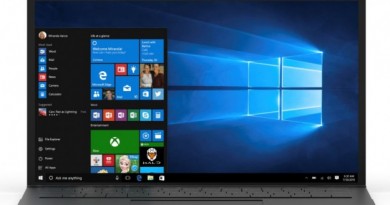Why Are There So Many Data Centers in Iowa?
The variables that determine where to locate a data center form a carefully calibrated form of real estate alchemy. When I’ve asked data center operations managers, the answer has varied from approximately forty characteristics to a blunt four: “Networks, land, power, and taxes.” Regardless of the exact incantations and calculations performed, many companies have concluded that central Iowa was an ideal location for their data centers.
While there are somewhat romantic historical reasons that make Iowa a compelling location for data centers, the majority of factors that attracted these companies speak to more contemporary concerns, like power costs and environmental impact. Iowa’s electricity rates are, relative to many other states, low. According to the U.S. Energy Information Administration, Iowa’s electricity rates for August 2015 were 10.92 cents/kilowatt for commercial use and 7.03 cents/kilowatt for industrial use (for comparison, California’s power rates are about 18.13 cents/kilowatt commercial and 13.87 cents/kilowatt industrial). While that rate isn’t that much lower than the national average, Iowa also doesn’t apply sales tax to power use. And while the majority of that power doesn’t come from wind, it’s a significant source—in 2013, 27.5 percent of Iowa’s electricity generation came from wind power (58.5 percent came from coal).
Both Google and Facebook are actively contributing to increasing wind power’s percentage, at least for their own operations. The companies both worked with MidAmerican Energy to ensure that their data centers would be entirely wind-powered, effectively underwriting the cost of the construction of brand-new wind farms. In Facebook’s case, the company deliberately supported the construction of a wind farm that could produce more than the data center’s estimated operational needs, adding renewable resources to the power grid rather than simply canceling its own power usage out.
The timing of Iowa’s data-center rush wasn’t simply a matter of lots of companies simultaneously realizing it’s a great data-center region. In 2007, when Google was initially negotiating the development of the Council Bluffs data center, the state legislature approved new tax exemptions and incentives for data center construction. These exemptions are the pragmatically named Iowa Data Center Business Property Exemption and the Iowa Web Search Portal Exemption. The former offers sales-tax and use-tax exemptions for any property that isn’t land or buildings—things like servers, industrial chillers, backup generators, and basically anything that makes a data center functional—while the latter offers similar exemptions but offers them explicitly to “web search portal businesses,” which are defined in the statute as any “entity among whose primary businesses is to provide a search portal to organize information; to access, search, and navigate the Internet, including research and development to support capabilities to organize information; and to provide Internet access, navigation, and search functionalities.” This is to say, Google’s one-sentence mission statement in legalese.
Iowa’s more massive data-center projects of the past eight years have also employed tax increment financing (TIF), a development strategy in which municipal governments offer tax incentives to a major development project in anticipation of longer-term raised tax revenues that the project will bring. In Google’s case, Council Bluffs offered Google $33 million in local property-tax exemptions over 20 years for its $600 million data-center construction.
The numbers that get thrown around talking about tax incentives and costs for data-center construction are a reminder of the ridiculous scale at which these companies operate, a scale that makes it difficult to really ascertain overall economic impact. Microsoft’s expansion of its data center operations in West Des Moines, for example, is estimated to be a $1.1 billion project. The Des Moines Register reported that The Iowa Economic Development Authority approved $20.3 million in sales-tax rebates for the project. Additionally, the city of West Des Moines promised Microsoft $18 million in local incentives, and are estimating that they’ll spend $53 million on local infrastructure improvements (e.g., road repairs and construction of new roads for the data center). So that’s an estimated $91.3 million in incentives and support for Microsoft to build a data center there, but again, we’re already talking about $1.1 billion.
Vacillating between the scales of municipal and state governments to the scale of companies like Google and Microsoft also makes it diffuclt to understand the ultimate return on investment for these states. In 2013, Iowa Public Radio reported that Google paid $900,000 in property taxes to Pottawattamie County. That doesn’t sound like an amount to sniff at, but it didn’t seem to make up for fiscal gaps and inopportune circumstances that led the county to raise property taxes last year.
This isn’t to say that Council Bluffs or the state haven’t seen any benefits—some of them just aren’t necessarily in the form of taxes. Google has worked with the Council Bluffs school district to provide Chromebooks to students for its 1:1 initiative—although, as that Iowa Public Radio story noted, Council Bluffs schools are primarily funded through property taxes, which Google pays at a reduced rate. And the data centers do create jobs—estimates offered by Facebook and Microsoft were around 500 for the initial construction, and around a fifth of that for full-time operations, maintenance, and various contractor roles.
Declaring whether a state or a city has significantly benefited—environmentally, financially, or socially—from a massive data-center project is not unlike the alchemical process that selects a region to be a data-center hub in the first place.




